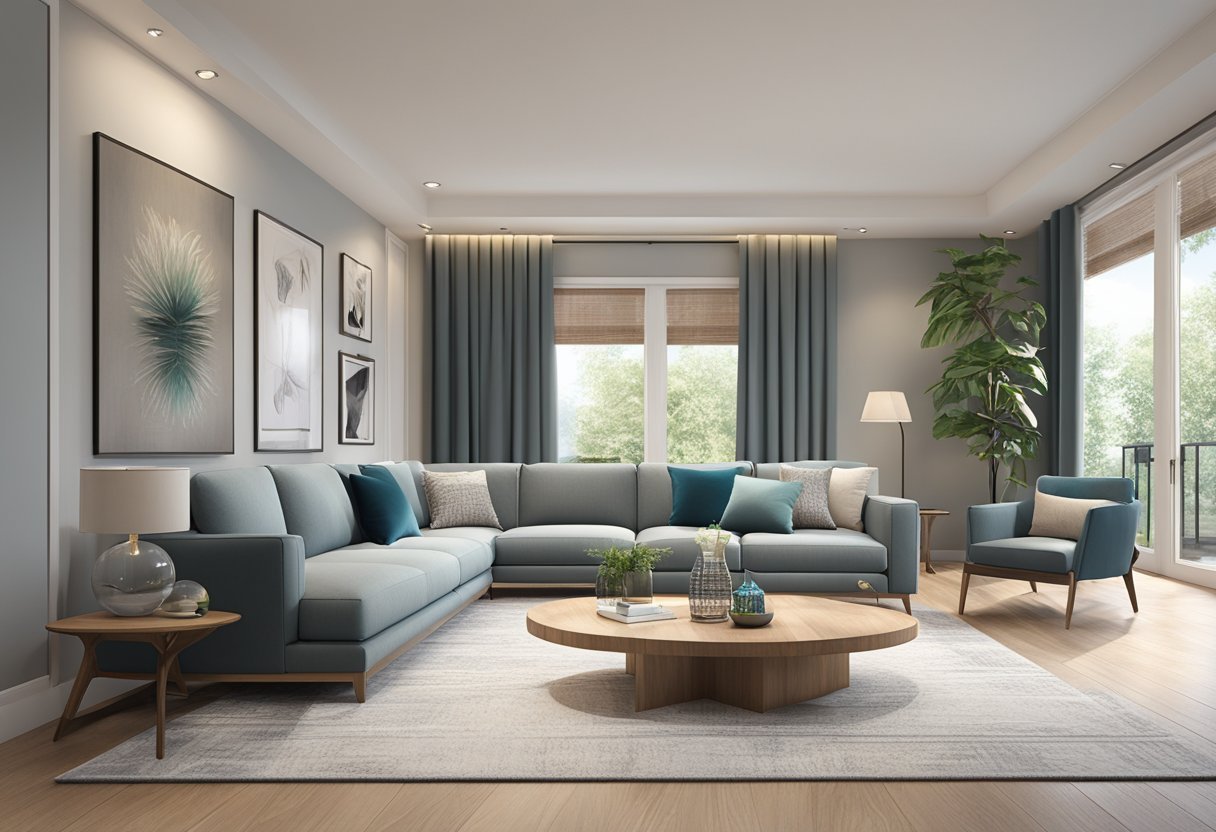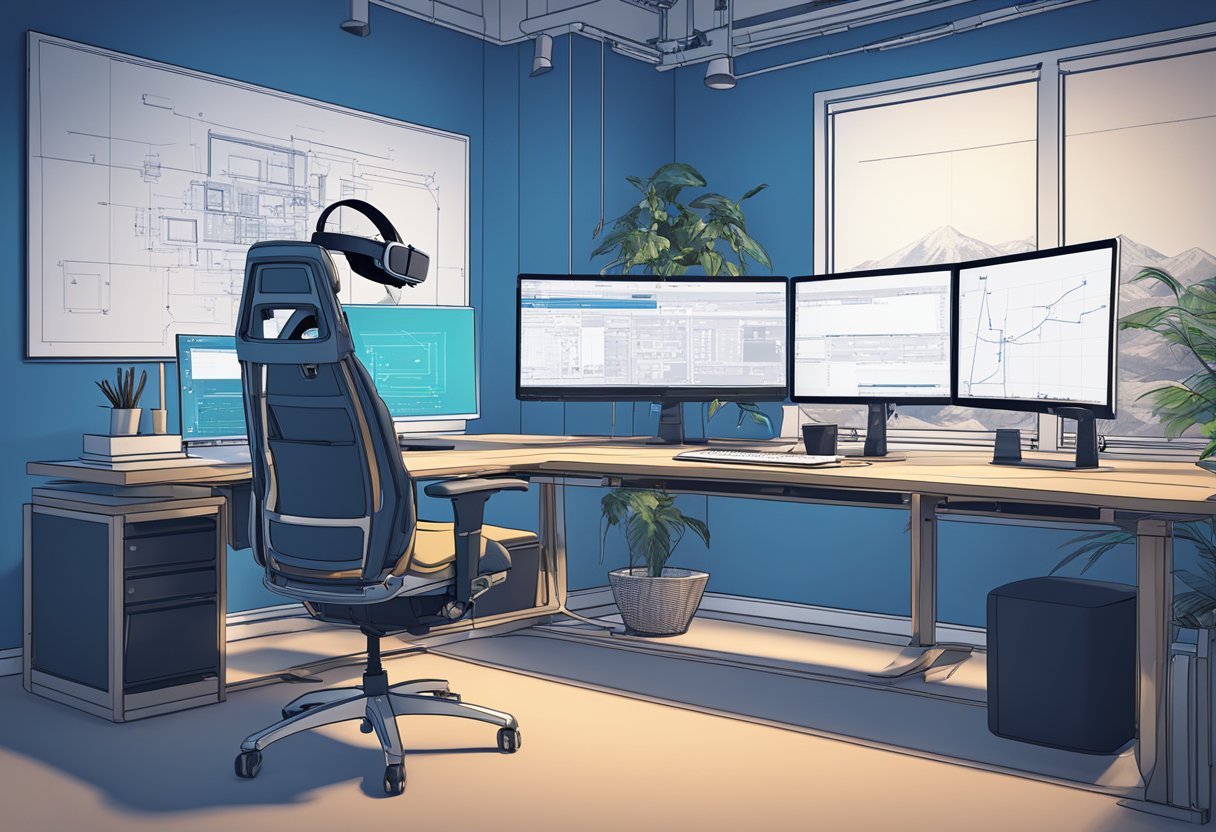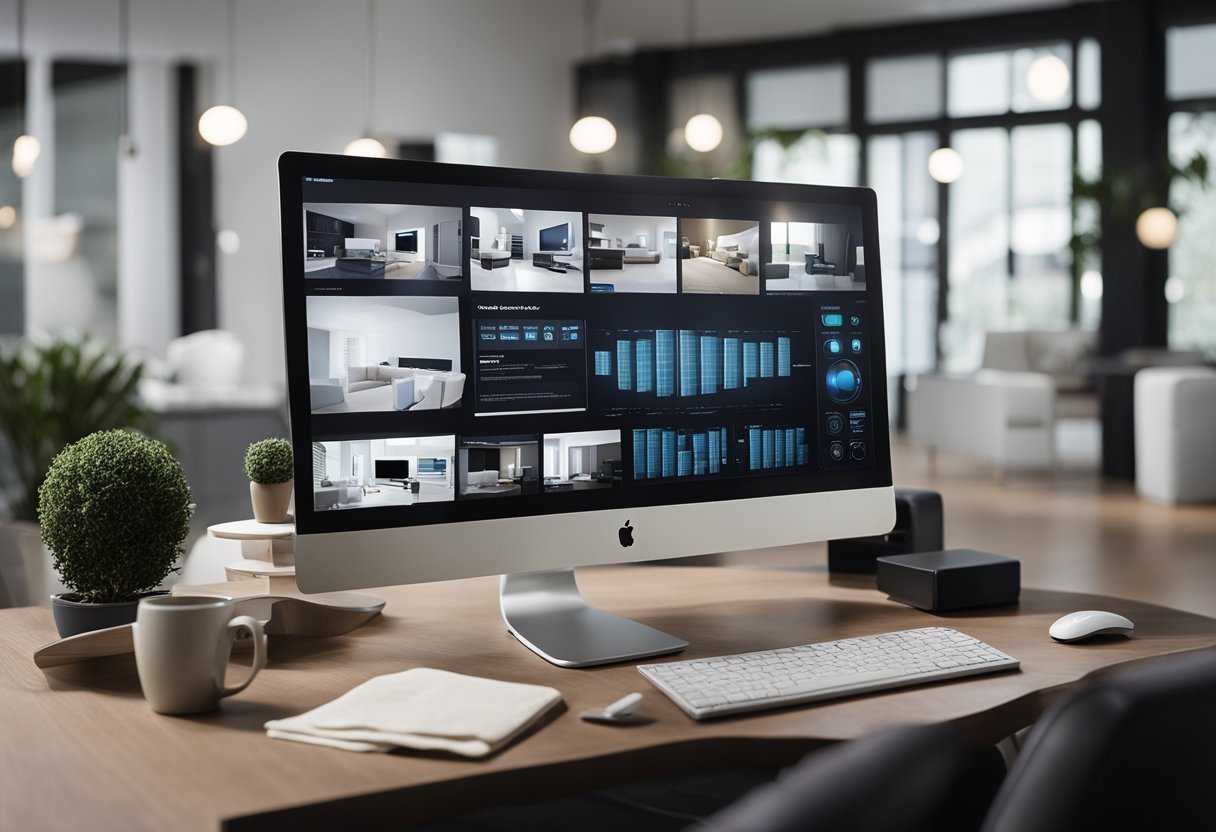Virtual staging is a modern technique used by real estate agents and homeowners to showcase a property’s potential without physically staging it. It involves using computer software to add furniture, decor, and other design elements to photos of empty or sparsely furnished rooms. This technique offers a cost-effective and convenient way to showcase a property’s potential to potential buyers.
Virtual staging is a relatively new concept that has gained popularity in recent years due to its many benefits. Unlike traditional staging, virtual staging allows homeowners and real estate agents to showcase a property’s potential without the time, effort, and expense of physically staging it. Additionally, virtual staging allows for greater flexibility and customization, as designers can easily swap out furniture and decor to create different looks and styles. Overall, virtual staging is a valuable tool for anyone looking to sell a property quickly and effectively.
Key Takeaways
- Virtual staging is a modern technique used to showcase a property’s potential without physically staging it.
- Virtual staging is a cost-effective and convenient way to showcase a property’s potential to potential buyers.
- Virtual staging allows for greater flexibility and customization, making it a valuable tool for anyone looking to sell a property quickly and effectively.
What is Virtual Staging

Virtual staging is a process in which a designer or a professional virtual staging company uses virtual staging software to create realistic 3D images of a property, including furniture, decor, and accessories. The goal of virtual staging is to help potential buyers visualize themselves living in the space and to showcase the property’s full potential.
How does Virtual Staging work?
Virtual staging software uses advanced 3D rendering technology to create realistic images of a property. The designer or professional virtual staging company starts by taking high-quality photographs of the empty space. They then use virtual staging software to add furniture, decor, and accessories to the images. The software allows the designer to adjust the color, texture, and lighting of each item to make it look as realistic as possible.
Virtual Staging Software
Virtual staging software is a tool that allows designers and professional virtual staging companies to create realistic 3D images of a property. There are many virtual home staging software options available, each with their own features and capabilities. Some popular virtual staging software options include:
- BoxBrownie
- Virtual Staging Solutions
- Virtual Staging Lab
- PadStyler
- Rooomy
Virtual Staging Services
Virtual staging services are offered by professional virtual staging companies. These companies have experienced designers who use virtual staging software to create realistic 3D images of a property. Virtual staging services can be a cost-effective alternative to traditional staging, especially for vacant properties that are difficult to sell. Some virtual staging companies also offer additional services, such as virtual renovation and virtual twilight photography.
Services and Pricing
Virtual staging services can vary in price depending on the company and the scope of the project. Some virtual staging companies charge per image, while others have a flat fee for a certain number of images. The cost of virtual staging can range from $30 to $200 per image. It is important to research and compare different virtual staging companies to find one that offers high-quality services at a reasonable price.
Virtual staging is a valuable tool for real estate agents, designers, stagers, and companies looking to showcase properties in the best possible light. With advances in virtual staging software, it is now possible to create realistic 3D images that can help potential buyers visualize themselves in the space. Whether you are looking for professional virtual staging services or virtual home staging software to do it yourself, there are many options available to help you achieve your goals.
The Process of Virtual Staging

Virtual staging is a process of creating a 3D scene of a room or property using 3D models, layouts, and design concepts. It involves applying design concepts to a virtual space to make it more appealing to potential buyers. The process of virtual staging is a cost-effective and time-efficient way to showcase a property’s potential without physically staging the space.
Creating a Virtual Stage
To create a virtual stage, a stager will start by rendering a 3D scene of the room or property. They will then apply design concepts such as furniture, art, lighting, colors, materials, textures, and layouts to the scene. The stager will also apply realistic light and shadows to the scene to give it depth of field and make it look more realistic.
Once the stager has created the initial scene, they will work with the client to make revisions and adjustments until the scene meets their needs. The stager will then provide the client with a final rendering of the scene.
Applying Design Concepts
The stager will apply design concepts to the virtual space to make it more appealing to potential buyers. This involves selecting furniture, art, lighting, and other objects that complement the space and create a cohesive look. The stager will also apply colors and materials that enhance the space and make it more inviting.
The stager will work with the client to ensure that the virtual stage meets their needs and accurately represents the property. They will also ensure that the virtual stage is realistic and accurately reflects the space’s potential.
In conclusion, virtual staging is a cost-effective and time-efficient way to showcase a property’s potential. The process of virtual staging involves creating a 3D scene of a room or property and applying design concepts to make it more appealing to potential buyers. By working with a stager to create a virtual stage, clients can save time and money while still showcasing their property’s potential.
Top 5 Virtual Staging Platforms

Virtual staging has become a popular option for real estate agents, photographers, and homeowners who want to showcase their properties in the best possible light. Here are the top 5 virtual staging platforms that are currently available:
- BoxBrownie – BoxBrownie offers a range of virtual staging services, including pay-as-you-go and prepaid credits. They also offer a white label lite and white label standard service for teams and agencies. Their virtual staging services are cost-effective and include virtual furniture, virtual renovation, and a furniture removal tool.
- Styldod – Styldod provides high-quality images with 3D assets and real-time rendering. They offer a range of virtual staging services for individuals, home stagers, contractors, sellers, developers, and home buyers. They also offer a furniture removal tool and virtual renovation services.
- VisualStager – VisualStager allows users to click, stage, and engage with their virtual staging software. They offer a range of virtual staging services, including augmented reality and virtual tours. Users can share their staged photos as JPGs or on the cloud as a single property website.
- Roomy – Roomy offers a range of virtual staging services, including AI-powered virtual staging and a range of 3D models and textures. They also offer a range of export options, including USD and CAD. Roomy is a great option for those who want a wide range of virtual staging options.
- Adobe Substance 3D Stager – Adobe Substance 3D Stager is a powerful virtual staging platform that integrates with Adobe Photoshop and Adobe Aero. It offers a range of virtual staging options, including a substance 3D collection and illustrator. It is a great option for those who want high-quality virtual staging for their real estate listings.
These are the top 5 virtual staging platforms that are currently available. Each platform offers a range of virtual staging services that are suitable for different needs and budgets. Whether you are a real estate agent, photographer, or homeowner, there is a virtual staging platform that will work for you.
Benefits and Considerations of Virtual Staging

Virtual staging is an innovative technology that has been gaining popularity in recent years. It involves creating a digital representation of a home by adding furniture, decor, and other design elements to make it more appealing to potential buyers. Here are some advantages and potential drawbacks of virtual staging:
Advantages of Virtual Staging
- Cost-effective: Virtual staging is significantly cheaper than traditional home staging. It eliminates the need to rent or buy furniture, transportation, and storage, which can add up to thousands of dollars in expenses.
- Flexibility: Virtual staging allows for greater flexibility in the design process. Designers can easily change the style, color, and placement of furniture and decor to create different looks for the same space.
- Realistic results: Virtual staging can produce highly realistic results that are difficult to distinguish from real furniture and decor. This can help potential buyers visualize the space and make it more appealing to them.
- Speed: Virtual staging can be completed in a matter of days or even hours, compared to traditional home staging, which can take weeks to complete. This can help sellers get their homes on the market faster and potentially sell them more quickly.
- Showcase: Virtual staging can showcase a property’s potential by highlighting its best features and downplaying its flaws. This can help sellers attract more buyers and potentially sell their homes for a higher price.
Potential Drawbacks
- Limited tactile experience: Virtual staging does not provide the same tactile experience as traditional home staging. Potential buyers cannot touch or feel the furniture and decor, which can make it harder for them to connect with the space.
- Unrealistic expectations: Virtual staging can create unrealistic expectations for potential buyers. They may be disappointed when they see the actual space without the furniture and decor.
- Backgrounds: Virtual staging often relies on pre-made backgrounds, which may not always match the actual property’s surroundings. This can make the space look disjointed and less appealing to potential buyers.
- Computer-based: Virtual staging is computer-based, which means that it requires a certain level of technical expertise to create and execute. This can be a challenge for those who are not familiar with the technology.
- Community: Virtual staging may not be suitable for all communities. Some areas may have regulations or guidelines that prohibit the use of virtual staging.
In conclusion, virtual staging can be a cost-effective, flexible, and realistic way to showcase a property’s potential. However, it may not provide the same tactile experience as traditional home staging, and it can create unrealistic expectations for potential buyers. It is important to weigh the benefits and potential drawbacks before deciding whether virtual staging is the right choice for your property.
Frequently Asked Questions
What is virtual staging and how does it work?
Virtual staging is the process of adding furniture and decor to photos of empty rooms. The goal is to give potential buyers or renters a better idea of what the space could look like furnished. Virtual staging software can be used to create realistic 3D renderings of rooms with furniture and decor added in.
What are some popular virtual staging software options?
There are several virtual staging software options available, including Adobe Substance 3D Stager, Virtual Staging Solutions, BoxBrownie, and Virtual Staging Lab. Each software has its own unique features and capabilities, and it’s important to research and compare them to find the best fit for your needs.
Are there any free virtual staging apps available?
While there are some free virtual staging apps available, they typically have limited features and may not produce the most realistic results. Some examples of free virtual staging apps include roOomy, RoomSketcher, and Planner 5D.
What are some virtual staging companies and their reviews?
There are many virtual staging companies available, including Virtual Staging Solutions, Virtually Staging Properties, and Virtual Staging Lab. It’s important to research and compare companies to find the best fit for your needs. Reading reviews from other customers can also provide valuable insight into the quality and effectiveness of a virtual staging company.
Can I do virtual staging myself or do I need a professional?
While it is possible to do virtual staging yourself using software, it can be time-consuming and may not produce the most professional-looking results. Hiring a professional virtual stager can ensure that the final product is high-quality and effective in attracting potential buyers or renters.
How much does virtual staging typically cost?
The cost of virtual staging can vary depending on the software or company used and the number of rooms or photos being staged. On average, virtual staging can cost anywhere from $25 to $150 per photo. It’s important to research and compare pricing to find the best fit for your budget.




